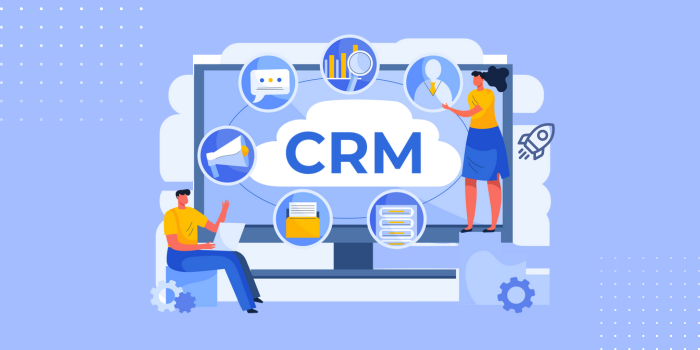There’s no one-size-fits-all benchmark for patient acquisition cost (PAC) because it varies depending on specialty and location.
However, a common goal is to achieve a ratio of patient lifetime value (LTV) to PAC of 3:1. This means, ideally, the revenue you earn from a patient over their time with your practice should be at least three times what it costs to acquire them.
As mentioned by Zocdoc, the average yearly value of a new patient for different specialties is:
- Dental – $841
- Ob-gyn – $546
- ENT – $458
- Ophthalmologist – $307
- PCP (Primary Care Physician) – $234
If you’re spending more than 1/3rd of this value, then you’re spending more than average on acquiring patients—even if your practice is new.
It also indicates that it’s high time to revise your marketing strategies to bring down your acquisition costs.
8 Sure-shot Ways to Reduce Patient Acquisition Cost
By implementing the following strategies, healthcare providers can optimize their patient acquisition efforts and achieve a lower PAC.
However, the most successful approach will involve a combination of strategies tailored to your specific practice and patient population.
1. Embrace targeted social media marketing
Utilize social media platforms to connect with potential patients in your area. Target your audience by demographics and interests to ensure your message reaches those most likely to need your services.
Example:
Shriners Hospitals for Children utilizes social media to share patient success stories and raise awareness of their paediatric care specialties.
2. Invest in patient referral programs
Reward existing patients who refer friends and family. Loyal patients are your best advocates, and referral programs incentivize them to spread the word about your practice.
Example:
NorthShore, a part of Endeavor Health, offers a referral program with rewards for patients who recommend their services. This strategy leverages the trust patients have in their existing providers to attract new patients.
3. Optimize patient experience for online booking and self-service
Make it easy for patients to schedule appointments and manage their healthcare online. This reduces administrative burden and frees staff to focus on patient care, leading to operational efficiencies that can lower costs.
Example:
Providence offers a user-friendly online portal where patients can schedule appointments, access lab results, and communicate with their providers. This reduces the need for phone calls and in-person interactions, streamlining patient scheduling and communication.

4. Partner with community organizations
Collaborate with local health fairs, community centers, or patient advocacy groups to reach new audiences. This targeted outreach can be more cost-effective than broad advertising campaigns.
Example:
Kaiser Permanente partners with community organizations to offer free health screenings and educational workshops. This builds goodwill, raises awareness of their services, and potentially attracts new patients who might not have considered them otherwise.

5. Utilize telehealth services
Offer virtual consultations or appointments via telehealth platforms. This expands access to patients in remote locations or those with mobility limitations, attracting new patients without the overhead costs of a physical visit.
Example:
Atrium Health offers a robust telehealth program for various medical services. This allows them to serve patients across a wider geographic area, potentially reducing the need for additional brick-and-mortar locations and associated costs.
6. Develop strategic referral networks
Build relationships with other healthcare providers in your area, such as primary care physicians or specialists in complementary fields. Encourage these providers to refer patients who need your specific services.
Example:
The Cleveland Clinic has a physician liaison program that fosters relationships with referring physicians. This program educates other providers about their services and streamlines the referral process, making it easier for patients to get the care they need.
Check that out – https://my.clevelandclinic.org/professionals/referring
7. Partner with local businesses
Explore collaboration opportunities with businesses that cater to your target audience. For example, a podiatrist might partner with a local shoe store to offer discounts or educational workshops. This creates a win-win situation, expanding your reach to a relevant audience through trusted local partners.
Example:
Advocate Aurora Health partners with local fitness centers to offer health screenings or educational seminars. This allows them to connect with potential patients who are already invested in their health and wellbeing, potentially leading to referrals from satisfied participants.
8. Implement patient engagement programs
Develop initiatives that encourage patients to be actively involved in their healthcare journey. This can include educational workshops, support groups, online communities, or even an active chat on the website can do the trick.
Example:
Baptist Health, uses AI-chat to understand patient’s symptoms and recommend virtual, urgent, or primary care accordingly. This enhances patient engagement and potentially reduce PAC.

Next Steps: Using CRM to Streamline Your Patient Acquisition Funnel
Healthcare CRM (Customer Relationship Management) software can be a powerful tool for reducing patient acquisition costs in several ways:
1. Targeted marketing and outreach
- CRM software allows you to segment your patient base by demographics, insurance type, and medical history. This enables targeted marketing campaigns focused on reaching the most relevant individuals for specific services.
- It can also help you tailor messages based on your patient’s needs and interests, making them more likely to engage with your practice.
2. Streamlined lead generation and conversion
- With CRM software, you can automate tasks like appointment scheduling, referral management, and follow-up emails. This frees up staff time to focus on nurturing leads and converting them into paying patients.
- Some CRM systems offer lead scoring capabilities. This assigns points based on a potential patient’s demographics, online behavior, and past interactions. You can prioritize outreach efforts for leads with higher scores, maximizing your chances of converting them into patients.
3. Improved patient retention and referrals
- CRM software helps manage patient interactions and track their healthcare journey. You can identify areas for improvement, personalize care plans, and address patient concerns promptly.
- The tool can track patient referrals efficiently. You can easily identify satisfied patients who might be more likely to refer friends and family, potentially generating new patients at a lower cost.
4. Data-driven decision making
- CRM software provides insights into the effectiveness of your marketing campaigns. You can track key metrics like cost-per-acquisition (CPA) and return on investment (ROI).
In conclusion, Healthcare CRM software can be a valuable asset in your fight to reduce patient acquisition costs. By facilitating targeted marketing, streamlining lead conversion, enhancing patient experience, and providing data-driven insights, you can attract new patients at a lower cost while fostering a loyal patient base.
If you’re looking for a powerful healthcare CRM to align your marketing and referral channels and reduce patient acquisition costs, LeadSquared could be a great choice.
Contact us to know more about the platform.







